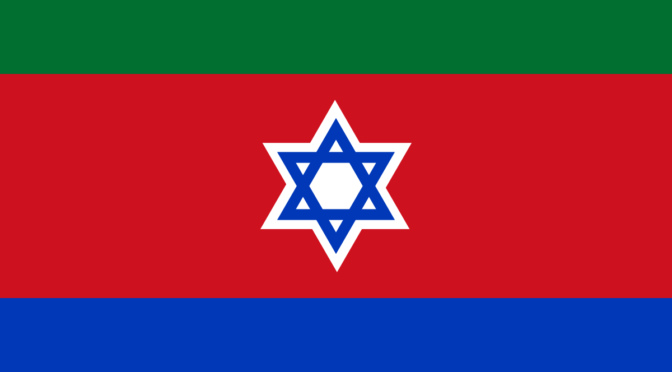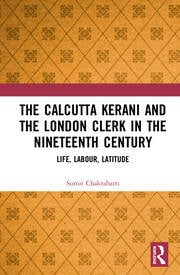Bene Menashe: The ‘Lost Jews’ of the Northeast?
Posted on : July 2, 2017Author : Admin2


It is said that the Bene Menashe (Sons of Manasseh) community emerged in the early 1950s from Christianized tribes of Chin, Kuki and Mizo settled in the Northeastern states of Mizoram, Manipur, Assam and the plains of Burma (Myanmar). As the dominant narrative suggests they were introduced to the Bible in the later British period and the groups found similarities between ancient Jewish customs and their indigenous traditions. This is said to have induced a section within the community to infer that their tribes were of Israelite descent. In the 1970s the leaders of the movement began interacting with Israeli authorities and with Jewish organizations in the Diaspora with a view to obtain permission to settle in Israel, Their position was strengthened by their connection with Rabbi Avichail from Amishav, an organisation dedicated to seeking out the Lost Tribes and assisting them in repatriating to the State of Israel. In 2005, the Sephardi Chief Rabbi of Israel Shlomo Amar indicated his decision to recognise the Bene Menashe as a Lost Tribe (as descendants from the ancient Israelite tribe of Menashe) and to assist in their formal conversion to Orthodox Judaism, which would ease their immigration to the Jewish State. The process of conversions did begin but came to a standstill later in the same year after the Indian authorities informed the Foreign Ministry of Israel that they were not in favour of this initiative. In November 2006 the first group of a hundred ‘lost Jews’ of Mizoram left for Israel. Some two thousand members of the Indian Bene Menashe community live in Israel. The official statement affirms that over seven thousand are waiting to immigrate.
The Bene Menashe also referred as the “Sinlung” recount the story of their relocation from the lands near Samaria to the land of the Medes. From there, it is assumed they meandered along the Silk Road to China and ended up settling in the Chinese province of Yunnan. They became part of the Tibet-Burma migrations from East Asia to the Northeastern region of India and Burma. They found themselves in their ancestral stories as being called the Tibeto-Burmans who belonged to the peoples of that region called the Mizo, Kuki, and the Chin (in Burma). It is interesting to know that the Chin-Kuki-Mizo people prior to their conversion to Christianity in 1894 were known as head-hunters and animists who carried with them legends that spoke of a beloved homeland, which was called Sinlung/Chhinlung. It was in 1951 that a tribal leader, Challianthange is said to have had a dream that his people had returned to the Land of Israel. He shared his vision with his people of whom many accepted the Jewish faith and traditions as Messianic Jews. The Bene Menashe believe that the traditional Mizo-Kuki harvest festival song ‘Sikpui Hla (Sikpui Song)’ which features events bearing a resemblance to the Book of Exodus, such as enemies chasing them over a red-coloured sea, harvesting quails, a pillar of cloud by day and a cloud-fire at night represent a distinct indication of their Israelite ancestry. As the lyrics (translated into English) indicate
While we are preparing for the Sikpui Feast (SIKPUIRUOI), The big red sea becomes divided; as we march along fighting our foes. We are being led by pillar of cloud by day, and pillar of fire by night. Our enemies, O ye folks, are thick with fury, Come out with your shields and arrows. Fighting our enemies all day long, We march forward as cloud-fire goes before us. The enemies we fought all day long. The big sea swallowed them like wild beasts. Collect the quails, and draw the water that springs out of the rock.

A Synagogue in Manipur Children celebrating Sukkot in Manipur
Are these people from Northeastern India really Jews? Or are they merely pretending to be Jewish in search of better employment opportunities? Stephen Epstein, noted that “evidence of their Jewish roots is very strong with customs such as performing circumcision on the eighth day following birth, honouring levirate (where the brother of a dead man must marry his brother’s widow) marriages, offering sacrifices on altars and wearing shawls that resemble the Talit (prayer shawl).” Michael Freund, chairman of Shavei Israel, a Jewish organization that helps repatriate Jews from other parts of the world, visited India in the 1990s. “Something pulled me there,” he is said to have told the Israeli media. “And when I met them and saw the similarities between their customs and beliefs and the biblical Israelites, I was convinced that these are indeed descendants of the lost tribes.” However, many are sceptical of these claims. For example, the Central Forensic Institute in Calcutta conducted DNA studies which revealed that Bene Menashe men had no genetic links whatsoever to Israel, although some female members of the tribe apparently shared some DNA with Middle Eastern peoples, most probably through intermarriage. In Israel, the immigration of Bene Menashe has become politicized. A section of the population doubt that they are Jewish. Unlike Ethiopian Jews, whose presence and connections to Judaism have been recognized for generations, the Bene Menashe are a relatively new phenomenon. Meir Sheetrit, a member of the Knesset and a former Interior Minister, is believed to have remarked that the arrival of Bene Menashe “endangered the Jewish identity of the state.” He further observed that “Apparently, there are those in government who think that if they come to Israel and convert to Judaism, maybe they will vote in future elections.” Similarly, comments by readers in the Israeli newspapers such as Haaretz, regarding the arrival of Bene Menashe revealed a deep sense of cynicism over their apparent Jewish identity.

The new arrivals A cultural centre in Kiryat Arba
As “Operation Menashe” acquires pace, one of the leading challenges for ‘Israel Returns’ is identifying appropriate employment opportunities for the new immigrants. Some work as bus drivers for Egged (Israel’s national bus network) along with several smaller, local transportation companies while a significant section is employed as workers in plantations in the enclave of Jewish settlements and still others have joined the armed forces. Nevertheless this is only one aspect of the broader problem of acclimatisation. As mentioned earlier there are over two thousand Bene Menashe Jews in Israel and most of them live in settlements. Their presence has been criticised by politicians who want to return the occupied territories to the Palestinians. Their presence in a deeply divided society has added to the multiple layers of schisms. Meanwhile, the Bene Menashe have cast aside most of their old rituals, and taken on a more mainstream approach to Judaism. They dress much like the other orthodox Jewish settlers; women in long skirts, and men in skullcaps, known as a kippahs. However, Rabbi Gangte says the community still struggles to find acceptance in Israel. There is a growing resentment in the community. About five-seven thousand Bene Menashe who still live in India want to settle in Israel. The government of Israel acknowledges that they are of Jewish descent, but it does not categorize them as Jewish. This implies that they cannot become Israelis under the Right of Return Law, which gives citizenship to anyone who can prove he or she is Jewish. Most of the Bene Menashe in Israel have got around the problem by converting formally to Judaism. Yair Lotjem, who works as a cleaner in Kiryat Arba, hopes Israel’s government will help the Bene Menashe to immigrate. “I still have family in India and one of the main reasons I’m still working is so that I can bring them over here. I want to bring them over here even if the government can’t help me. The community here is lobbying to bring Bene Menashe. I hope it succeeds.” The Exodus continues…

Jewish Settlements
Addendum
“If there is a need to live in the occupied territories, we will do it,” asserts Rabbi Yehuda Gin Vaiphei. He lives in Kiryat Arba, a volatile unlawful settlement near Hebron on the West Bank, whose residents habitually clash with Palestinians. For him, “World opinion changes with human cycles but the truth of the Bible remains. The Palestinians say they belong here but I also belong here. Where was the Palestinian nation for 2000 years? Israel did not invade her.” It is an interpretation of history customarily conjured by Israel’s religious right. With his mild manner and his distinctive Northeastern appearance, Rabbi Yehuda Gin Vaiphei, from Manipur, appears to be the most unlikely person to be espousing and replicating the sentiment. Similarly. Tzvi Khaute, a gentle Manipuri, and a graduate of Delhi’s Ramjas College, pronounces rather dispassionately that there are no “secular” Jews among the Bene Menashe. As a matter of fact, he himself made a conscious “political decision” to live in Kiryat Arba notwithstanding an employment offer in Haifa, the Israeli port city. “This is my land and I am a part and parcel of nation-building,” he contends. The allusion that inhabiting an illegal settlement constitutes nation-building would be questioned not merely by the international community but also by many Israelis, who do not consider the West Bank as a part of Israel but of a future Palestinian state. One of the fundamental questions confronting the Bene Menashe, as they embark upon a new chapter in their Jewish “homeland” is: “Are they a “lost tribe” of Jews from India, or an eager army in the ongoing demographic war between Israel and Palestine?”
Priya (2/7/2017)
To read more reflections, click here





Leave a Reply